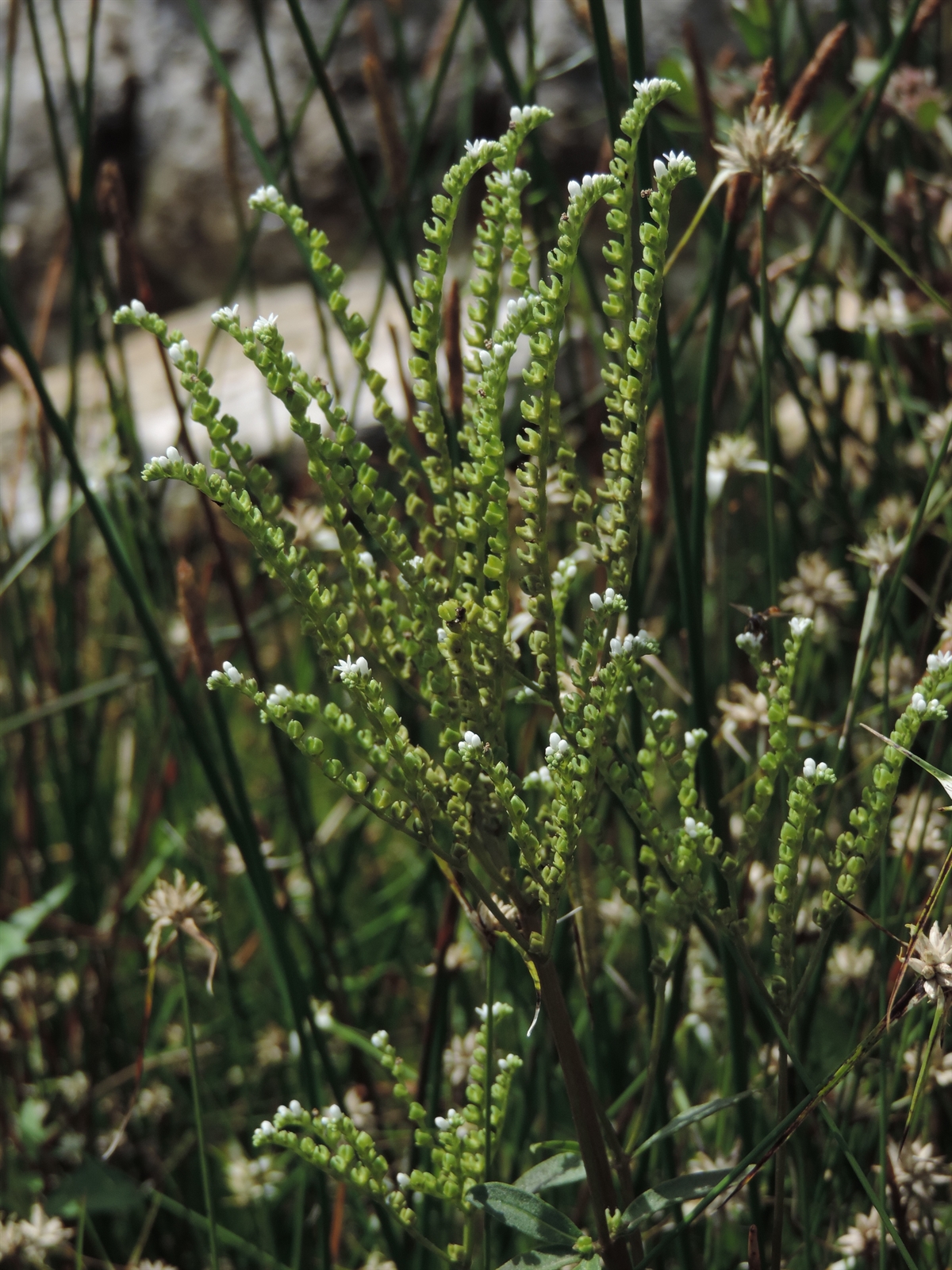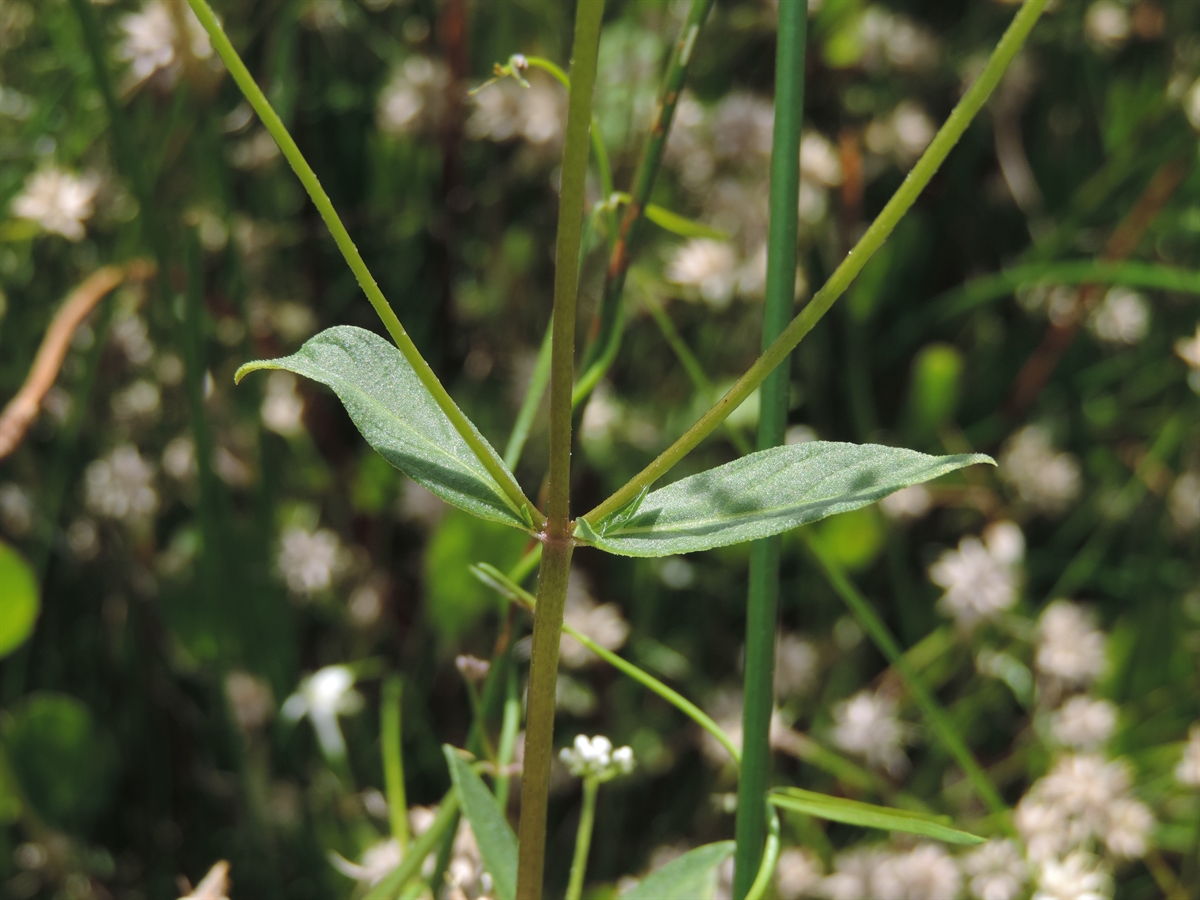Habit: Mitreola petiolata grows as a glabrous, herbaceous annual up to 1 m in height. The leaves are arranged oppositely, to 8 cm long (usually smaller), ovate to elliptic and an acuminate leaf apex with an entire margin
The complete, perfect, actinomorphic flowers are in terminal or axillary cymes. The calyx has 5 fused at the base sepals. The corolla has 5 fused white petals. There are 5 anthers are fused at the base to the corolla. The superior ovary has 2 locules and multiple ovules. The fruit is an elongate horned capsule.
Habitat: Mitreola petiolata grows in Fresh Water Wetlannds and ephermeral areas that remain wet for extended periods (ditches, low patches, grasslands).
Distribution: Mitreola petiolata occurs in the northern island groupings of the Lucayan Archipelago, the southern United States and tropical regions of the world.
Medicinal/Cultural/Economic usage: Mitreola petiolata is not known to be used medicinally in the Lucayan Archipelago.


